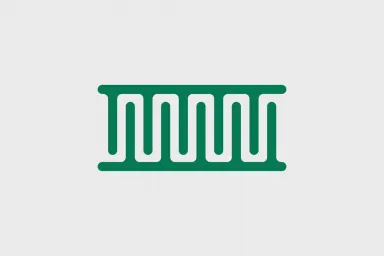
Technical Papers & Patents
Get an insight into the patented technology we develop through our technical publications
SAW Technology
Read further about the benefits of SAW Sensor Technology and how it compares to competing technologies
Unlike other force and torque sensors, SAW technology measures microstrain, enabling measurement without compromising the mechanical integrity of the system. Simplifying the measurement of existing components.
SAW torque sensors can deliver better than 1% of full-scale accuracy over the temperature range -40°C to +150°C together with low hysteresis and drift. Enabling improved control and performance.
High sample rate of 2 kHz enabling for example, torque measurement in engines and powertrains every few degrees of shaft or disk rotation (eg. every 3 degrees at 1000 rpm).
Many automotive applications require torque sensing close to electric motors and solenoids. This is problematic for some other types of sensor technology.
Measures torque, thrust, pressure and temperature on rotating or moving components.
Non-contact offers long mechanical life and are maintenance free as they don’t use parts which will wear and tear.
There are no wires or slip rings between the sensor and electronics.
No electrical power is applied to or generated by the sensor, the energy exciting the SAW sensor is provided by the interrogating RF pulse.
A typical Transense SAW sensor is an intrinsically a low cost device. It contains no electronic components.
A typical SAW sensor weighs less than 1 gram. This is very beneficial in motorsport applications where every gram counts
Enables the addition of one or two sensing elements to existing components such as shafts or disks with only minimal intrusion or modification.
Unlike other technologies the SAW torque sensor can be mounted on any type of steel even other types of metal.
SAW sensors have demonstrated considerable tolerance to high shock loads, high speed centripetal forces, vibration and chemical resistance.
This has been the conventional method for measuring rotating torque by using a piezoresistive (a material that changes resistivity depending on strain) strain gauge attached to the rotating shaft. Changes in strain, because of torque, are recorded as variations in an electric signal.
This method typically uses a pair of identical toothed disks attached at opposite ends of a portion of the shaft enables a ‘twist angle’ to be determined from the phase difference between them through an optical or magnetic measurement, which in turn enables torque to be calculated.
This method for torque readings is achieved through the measurement of changes in magnetic permeability or the magnetic field that occur on regions of the shaft surface because of torsional stress from the applied torque. These variations in permeability or the generated magnetic field are measured by encircling the shaft in some pattern of coils of wires and observing differences in induced voltages.
| Strain Gauge Sensors | SAW SensorsSAW Sensors | Displacement Sensors | Magnetoelastic/ Magnetostrictive Sensors | |
|---|---|---|---|---|
| Non-contact | NO ₁ | YES | YES | YES |
| Torsionally stiff | NO | YES | NO | YES |
| Independent of T without need for compensation | NO | NO | In some cases | NO |
| Radially Mountable | NO | NO | YES | NO |
| Package-able in motorsport race conditions | NO | YES | NO | YES |
| Suitable for use is liquid environments i.e. oil | NO | YES | NO | NO |
| Frequency response | 1kHz | Possible up to 8Kz, normally 1.7 kHz | 500 Hz | 2 kHz |
| Operational Speeds | NK ₂ | 0 – 30,000 rpm | NK ₂ | 0 - 20,000 rpm |
| Operational Temperature range | NK ₂ | -40°C to+150°C | NK ₂ | +20°C to +130°C |
| Static and Dynamic measurement | NO | YES | NO | YES |
| Suitable for medium to high volume manufacture | NO | YES | YES | NO |
| Suitability to a variety of steels and non-ferrite materials | YES | YES | YES | NO |
1 - To have a non-contact capability requires inductive coupling, slips rings or electronic shaft telemetry
2 - NK = Not Known

Get an insight into the patented technology we develop through our technical publications

Questions and answers on our patented Transense Torque and Temperature sensors